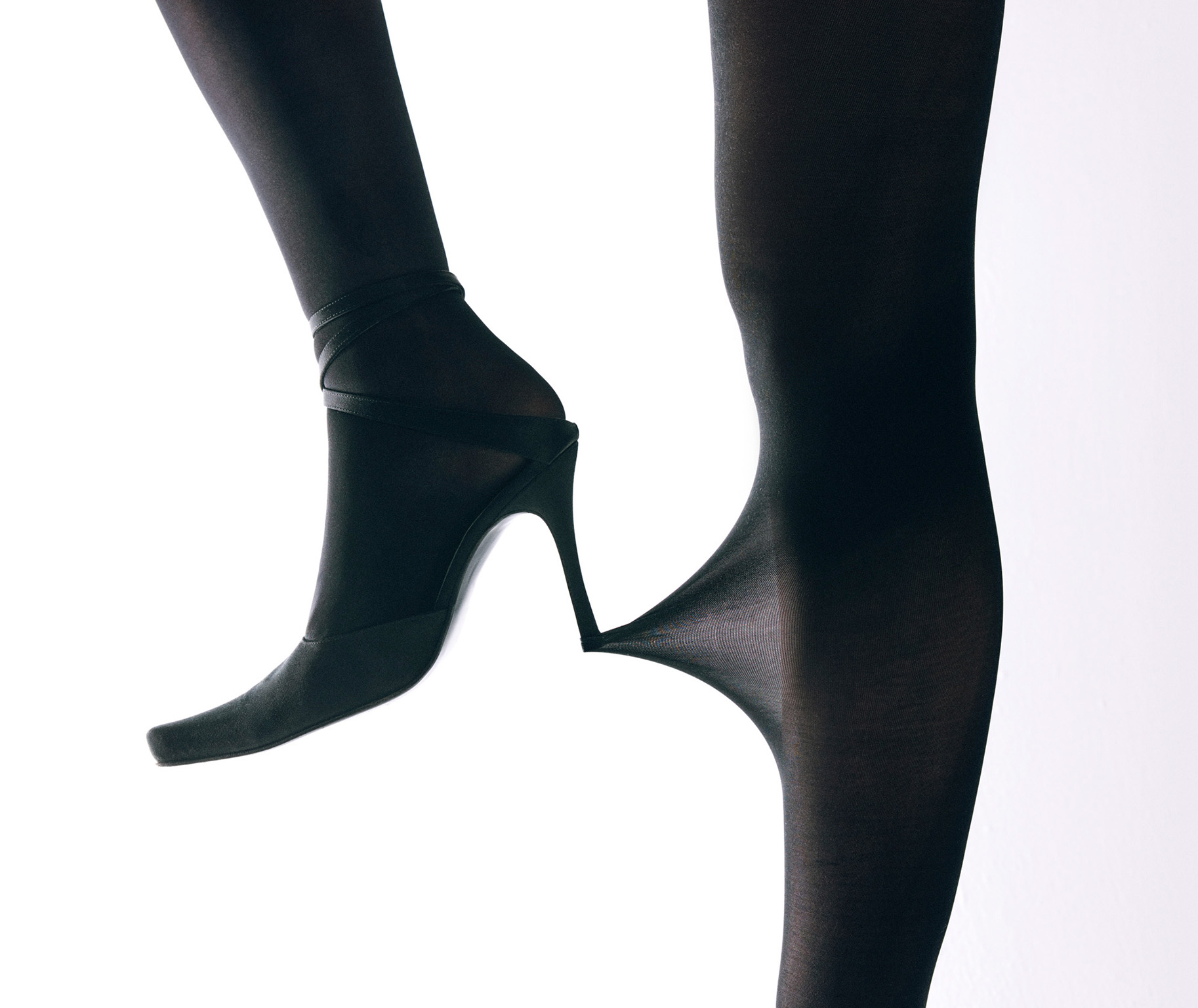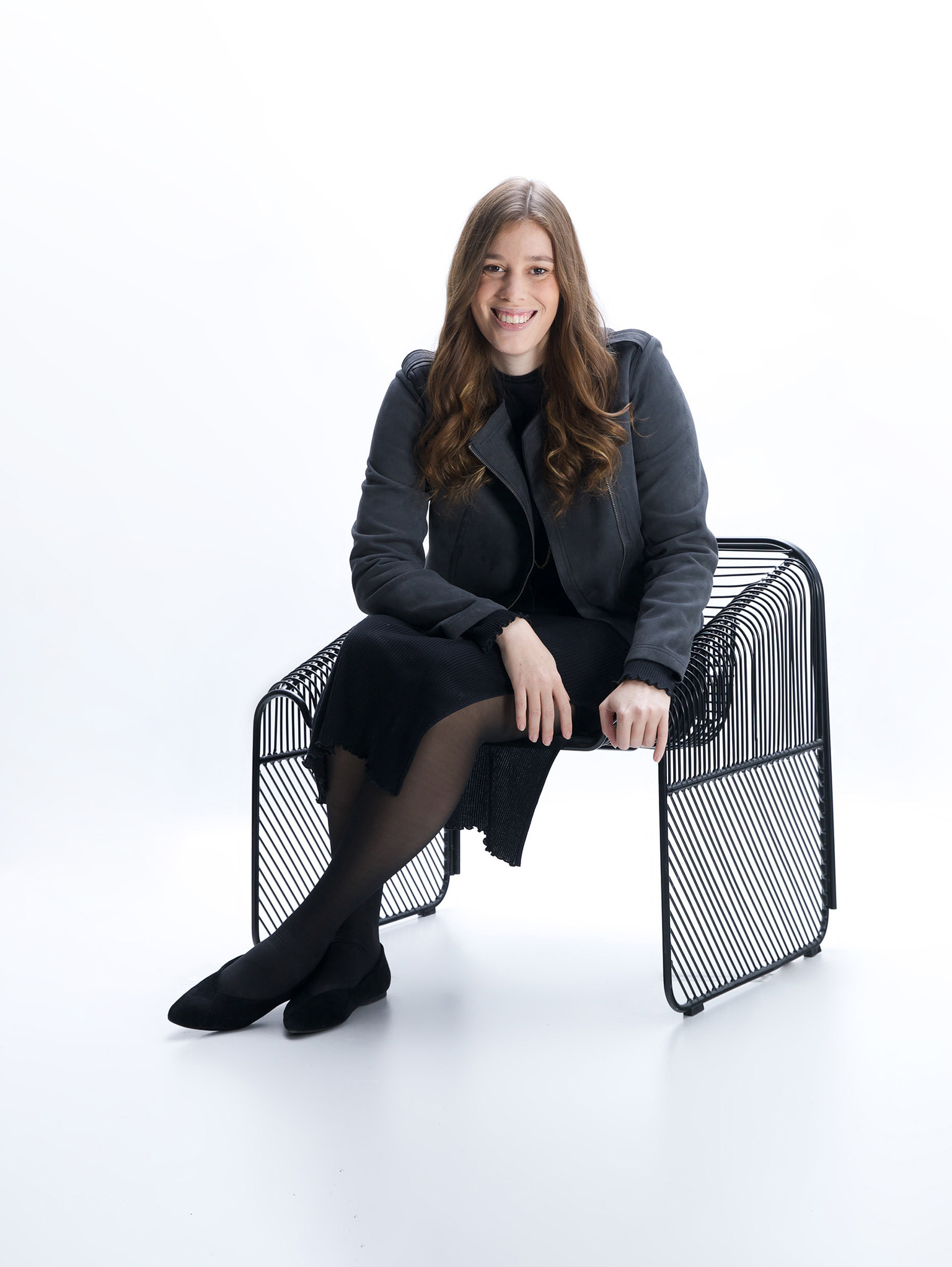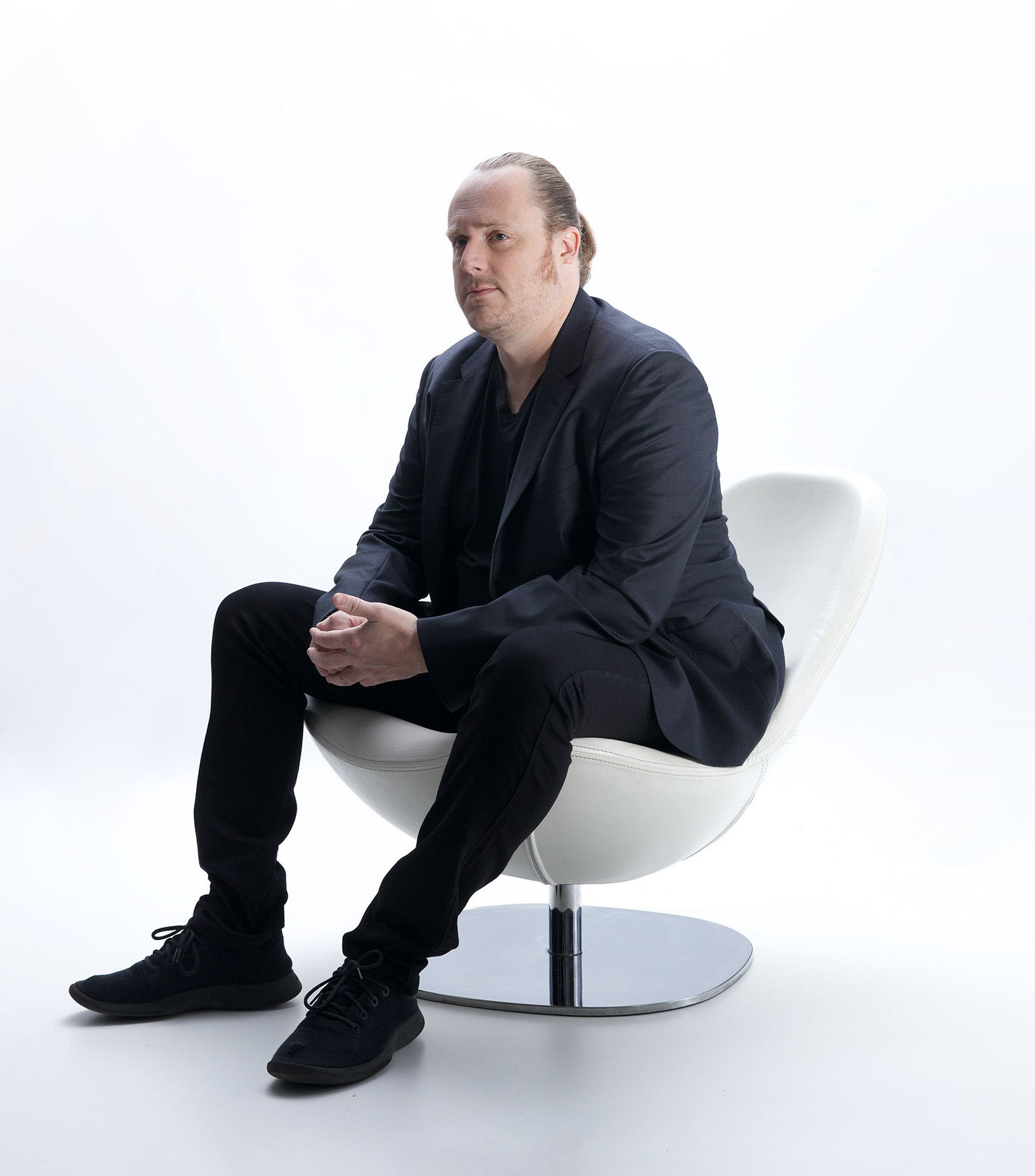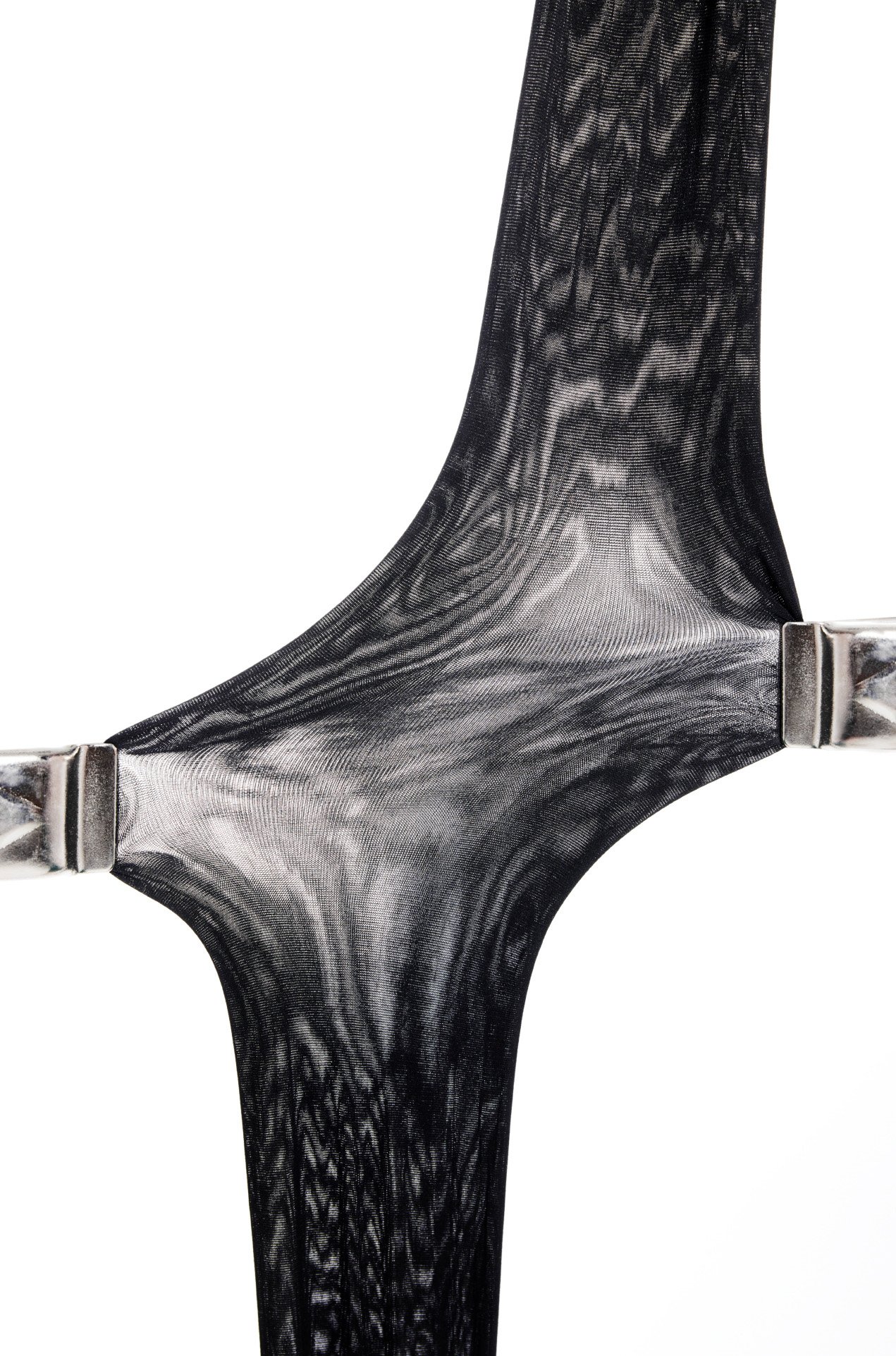Sheer Genius
by John Lorinc
photography by Betsy-May
As befits an outfit that figured out how to build a better mousetrap, the marketers at Sheertex, the Montreal-based tights company, know how to spin a really good yarn, although they need visuals and contraptions to do it justice.

At the company’s cute and busy pop-up shop in London’s trendy Carnaby Street, the walls were festooned with photos and videos of Sheertex’s apparently unbreakable fabric being subjected to all manner of stretching, poking and random abuse. The visuals seek to win over skeptical consumers who’ve been, well, hosed by earlier claims of durability that were as flimsy as a $10 pair of nylons.
She said she could create an indestructible pantyhose and people I knew in the industry said it would never happen, that I was wasting my time. But she perfected it
For most people, the annoyances of daily life are just that, annoyances. However, for entrepreneurs like Sheertex’s founder Katherine Homuth (BBA ’11), they’re opportunities – problems to be solved. “Tights that last one, two or three wears are incredibly annoying,” she says. In early 2018, Homuth decided to figure out how to make them last – a challenge that had eluded an entire industry. “I wanted to solve a real hair-on-fire problem.” The goal: to eradicate the laddering and tears that have turned tights into one of the world’s most disposable articles of clothing. Globally, about two billion pairs of nylons end up in landfills each year.


A Schulich School of Business graduate, Homuth by her mid-20s had become a successful serial entrepreneur. Five years ago, she sold her previous venture and began her search for a better fabric. Eventually, she found herself pondering whether she could use a polymer used in bulletproof Kevlar vests, of all things, to solve this problem.
Homuth created a prototype. Her first customers were also her first investors – 1,600 people who’d backed a Kickstarter campaign in exchange for a pair of indestructible tights. Five years on, her gut instinct has evolved into a remarkable success story. On the strength of a strong brand promise, Sheertex has grown rapidly, graduating from a 2,000-square-foot space in Muskoka to a 115,000-square-foot Montreal garment factory with more than 200 employees. Sheertex sells its tights all over the U.S., Europe and Australia, and has attracted more than $140 million in equity from a range of players that include early-stage venture capital firms and specialized tech investors, such as Toronto’s ArcTern Ventures.
“We invest in technology companies that are sustainably transforming traditional industries [and] look for outstanding entrepreneurs that have proven they have a great product customers love that can be scaled profitably and quickly,” Zach Barasz, a director with Silicon Valley-based G2VP, said last year. “Sheertex hit all those criteria.”
Fellow York alum, Joe Fresh founder Joe Mimran (BA ’74), was another early investor. He backed her initial $250,000 angel funding round.
Mimran was impressed by her ability to think outside the box. “She said she could create an indestructible pantyhose and people I knew in the industry said it would never happen, that I was wasting my time. But she perfected it. She created the yarn. She knitted it in northern Ontario and then Time voted it one of the best products of the year for 2018. It just shows you what a person with passion can do,” Mimran said in a 2019 interview with The York University Magazine.
The most significant contribution, however, came from the Swedish fast-fashion giant H&M, which last year invested $101 million and now has a seat on the Sheertex board. The equity mating game began quite by happenstance. In 2019, one of Sheertex’s investors met an H&M executive at an industry event and began talking up the product. H&M anted up a small stake, and steadily expanded the relationship, which dovetails with the firm’s 2030 carbon goals. Besides being an investor, H&M is now selling Sheertex tights through its COS chain.
Yet Homuth admits that it’s not readily apparent, even to her, precisely what’s fuelling Sheertex’s revolutionary appeal. “It’s a good story, but it’s hard to determine if this is a regular growth rate,” she says. The ambiguity isn’t hard to fathom: the company launched itself into the market with a very expensive product – initially, Sheertex’s tights sold for about $100 – on the eve of a pandemic defined by the abrupt shift to work-from-home and the consequent turtling of the segment of the fashion industry oriented toward office clothes.
In my real life, I am not at all a risk taker. In my mind, the riskier thing would have been to play it small

In August 2020, Homuth found herself facing an existential question: her upstart firm, then still raising money from venture capital firms, either had to go long or go home. “My decision was to go all in,” she recounts of a 12-week period at the end of that first pandemic summer. “We couldn’t continue to raise money if we didn’t keep growing. That was very difficult operationally, and even more difficult to pitch to the board.”
The instinct to make what she calls “the big bet” isn’t linked to any sense of personal or physical courage, she says with a laugh. “In my real life, I am not at all a risk taker.” But in business, she’s quite the opposite, although Homuth reframes that fork-in-the-road moment three years ago. “In my mind, the riskier thing would have been to play it small.”
Going all in meant expanding Sheertex’s production capacity and then relentlessly driving out cost and complexity from the manufacturing process. Zak Homuth, her husband and the company’s president, explains that the material, though extremely resilient, posed all sorts of challenges. It didn’t behave like conventional nylon, and thus produced what he describes as “a massive amount of waste.”
“The [sewing machine] operators didn’t understand how to make [them].” What’s more, the material itself was expensive and not easy to source.
The firm’s operations team has methodically chipped away at the cost to produce a pair, whittling a few dollars per unit here, a few dollars there. A basic pair now sells for $15, which is still a few dollars north of where Zak Homuth wants. “At $12,” he says, “you’re trying to shave everything” – packaging, yarn, warehousing, shipping – “without breaking the foundation.”
Marketing, initially, turned on word-of-mouth, social media reviews, and testimonials from influencers. The wrinkle, as it were, is that introducing a premium-priced product into a category that has long trained consumers to expect lousy quality is not exactly straightforward.
“If you’re on Facebook or Instagram, TikTok, or whatever you do, you really have to cut through that noise in order to get that click and ultimately get that conversion,” observes Zak. “The super powers really, really matter.”
Consumer habits can be very difficult to break, even in the ever-replenishing world of fashion. “There are certain basic pieces in my wardrobe that I have had for 20 years,” observes marketing expert Eileen Fischer, who is Schulich’s Anne & Max Tanenbaum Chair of Entrepreneurship and Family Enterprise. “But there’s other portions of the fashion industry where updating is just pretty hard to get around. It isn’t just companies that would have to change for that to be different. Consumers would have to change and I don’t see signs of that happening too quickly.”
I wouldn’t say that we necessarily started with, how do we make tights more sustainable? It was a by-product of creating a better consumer experience
However, she says that the fashion industry has shown signs of responding quickly to shifting consumer attitudes in one area, which is its carbon footprint. Many brands are going out of their way to show they’re reducing water use, waste and energy while aiming to improve the labour practices of their suppliers. During the wave of ecological concern that crested early in the pandemic, Fischer adds, some younger consumers woke up to the damage caused by fast fashion and cheap materials.
She points to various circular economy initiatives, such as Ralph Lauren’s new offer to take back cashmere garments. From a distance, Sheertex certainly seems to fall into this category – a long-lasting product that replaces an ultra-cheap commodity that ends up in landfill and never degrades. Kat Homuth, however, doesn’t think that the company’s most salient brand promise is sustainability. “Philosophically, the way we approach product development and material development is very much about solving a consumer problem first, and then ensuring that we do it in a sustainable way,” she says. “So I wouldn’t say that we necessarily started with, how do we make tights more sustainable? It was a by-product of creating a better consumer experience. Of course, if you take something and you make it last ten times longer, you’re going to remove waste and create this more sustainable buying pattern for that consumer.”

Homuth adds that European consumers tend to be more receptive to the sustainability promise, and are also more willing to pay a premium for them, whereas in North America, consumers are still much more interested in Sheertex’s narrative about a durable product.
However it was positioned, the material and the tights don’t sell themselves. Indeed, as Zak Homuth acknowledges, there’s been no shortage of trial and error along the way. For instance, the company has experimented with expanding its brand presence by adding a bridal line (“tougher than a mother-in-law”), shoes and even socks. The latter two didn’t pan out.
In terms of distribution channels, Sheertex invested heavily in establishing a presence on Amazon, but soon discovered that imitators were buying their way to the top of the search results. Then there were the mischief-makers. “We used to call the product ‘unbreakable,’” he says. “But at some point, someone registered ‘unbreakable tights.’” To ward off copycats or knock-offs, the company added a line of green thread near the top of the thigh, even though the introduction of this extra fabric actually undermined the tights’ durability. Zak Homuth adds that another pop-up location is planned, for Berlin (there was another in Manhattan), all with the goal of turbocharging Sheertex’s brand recognition and providing consumers with the opportunity to pull and prod the material. If these work, he adds, the company will make some of them permanent, and the next step will be locating vending machines near office-dense locations, where demand for emergency replacement tights is high.
As the company’s reputation has grown, Kat and Zak Homuth have spent a lot of time thinking about how other Canadian fashion firms have managed their own trajectories – brands such as Canada Goose, which altered the calculus of the winter coat market by refusing, initially, to discount its product or ship its manufacturing overseas. While they’re not going to move production to Asia anytime soon – as Zak Homuth explains, the material comes from Europe and remains the most expensive part of the cost structure – recently the company launched a Kickstarter campaign for its first non-hosiery product – a swimsuit line – and is in the process of developing other fabrics and garments in its R&D lab.
Interestingly, though, Kat Homuth is most jazzed by the prospect of transforming Sheertex into a manufacturer of white label tights – something she describes as “a dream” from the company’s earliest days. “I didn’t really set out to create a direct-to-consumer brand. I set out to create a technology and I believe that this technology should be in every pair of tights.”
Indeed, the opportunity that lies ahead for Sheertex has plenty of stretch. “I wouldn’t even say that we’re there,” she muses. “We are still on this journey to change this category.” ■